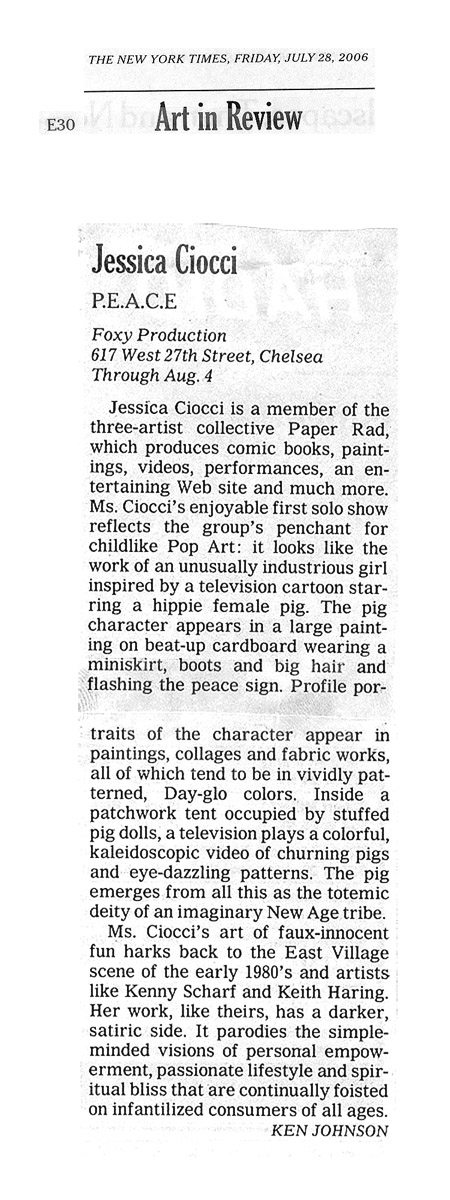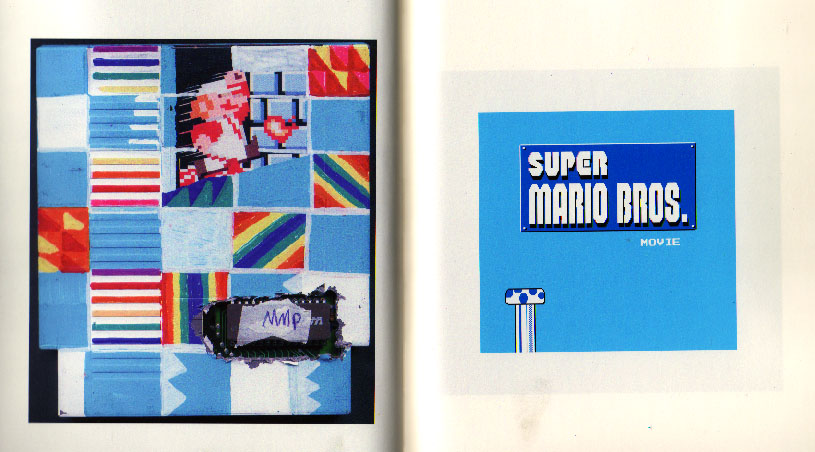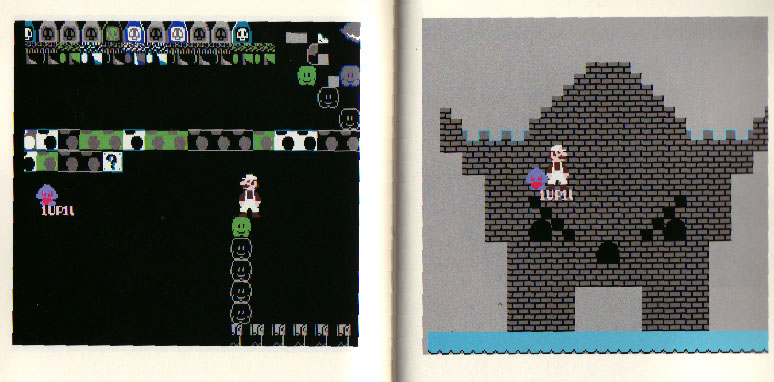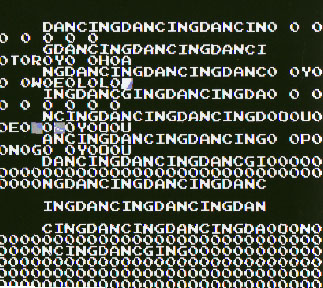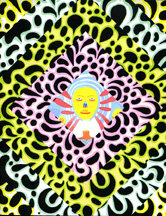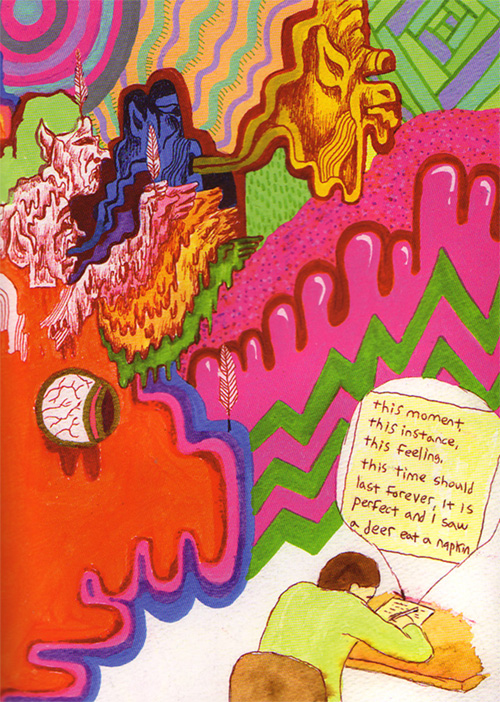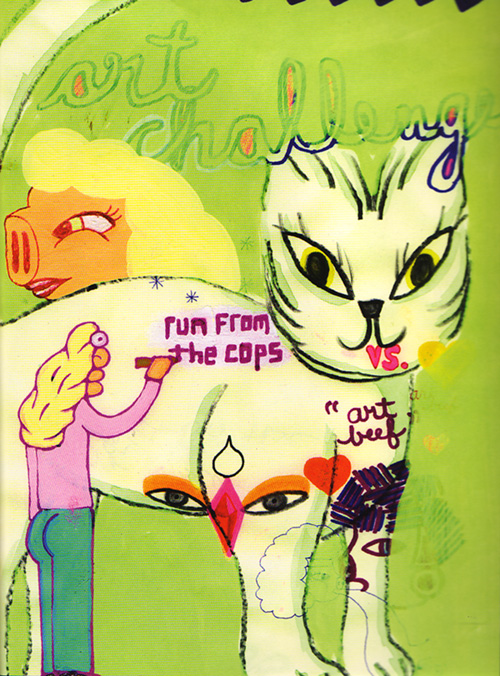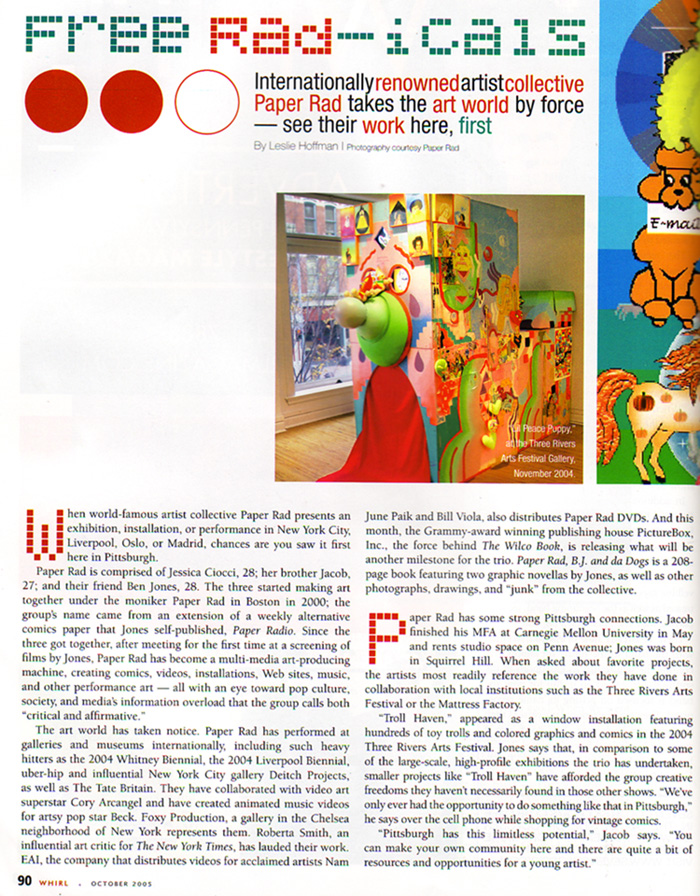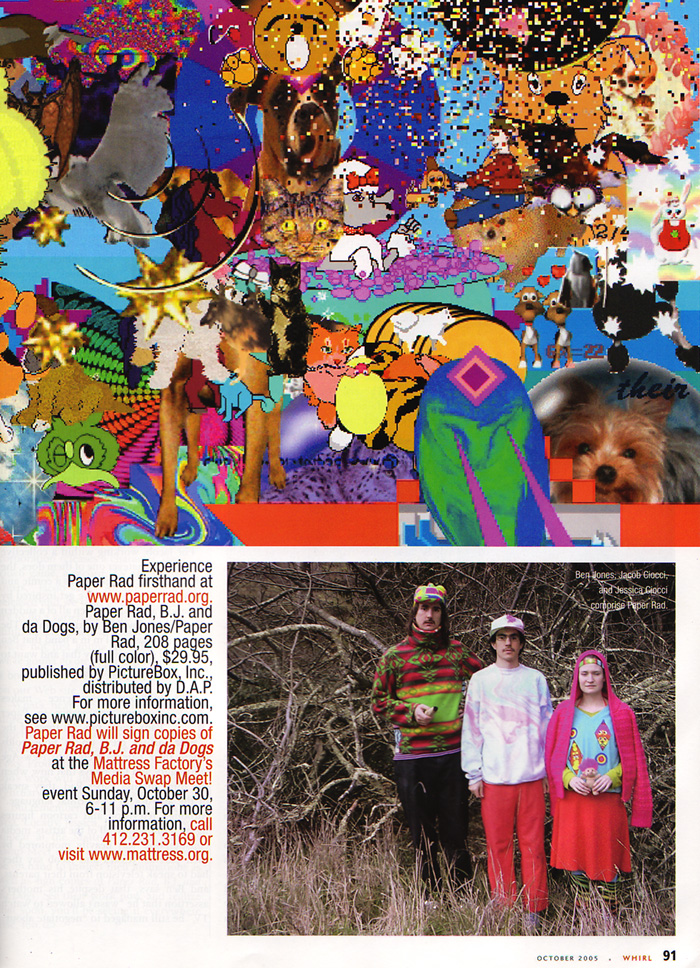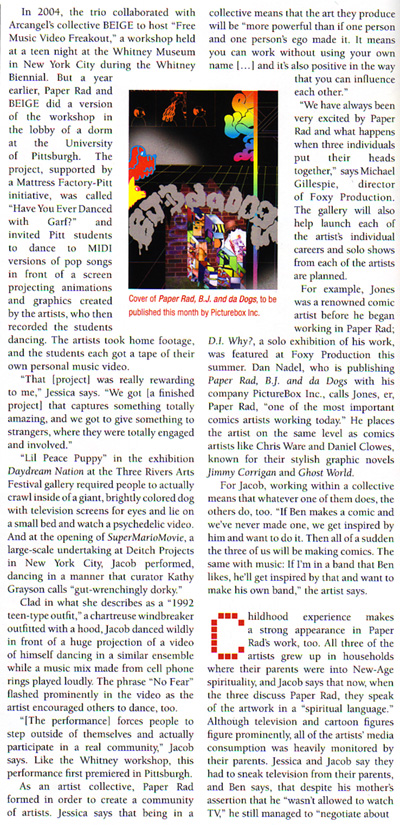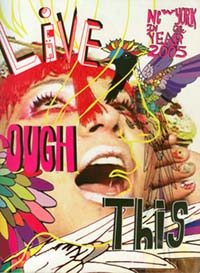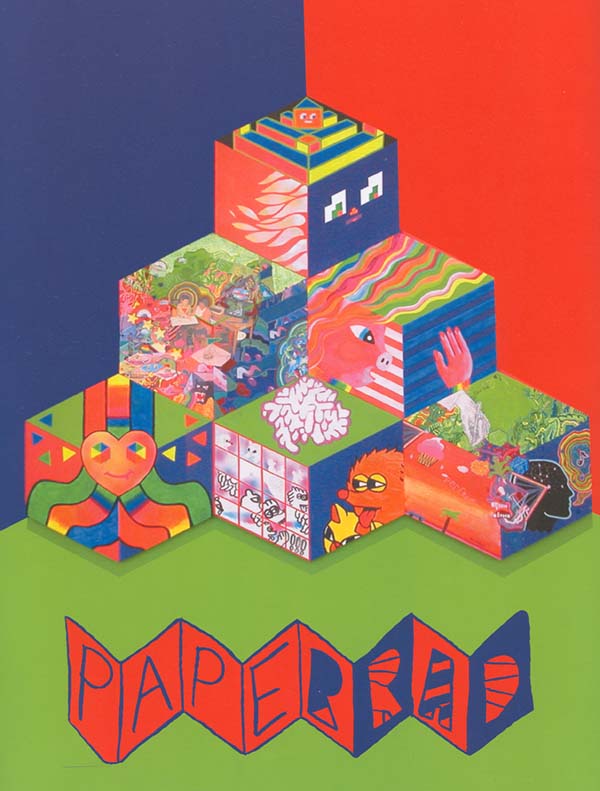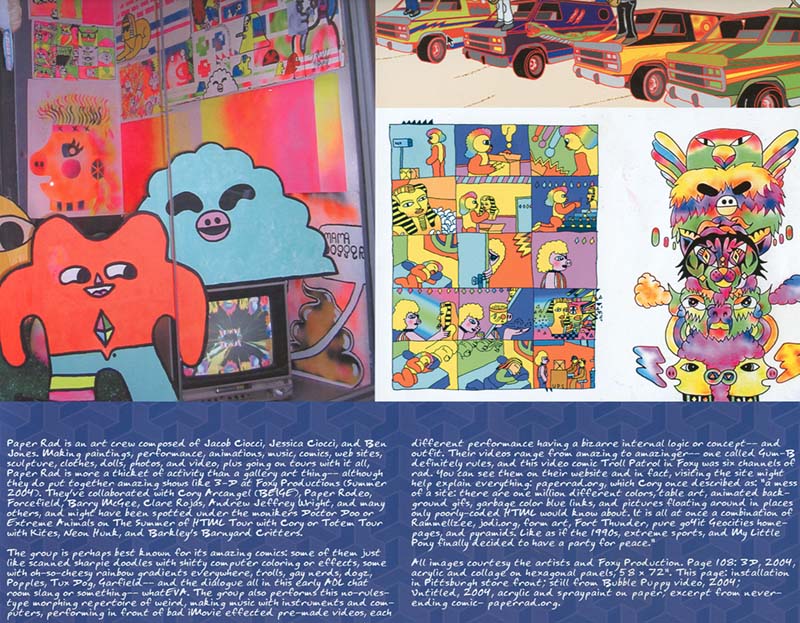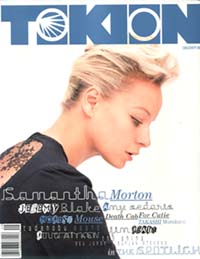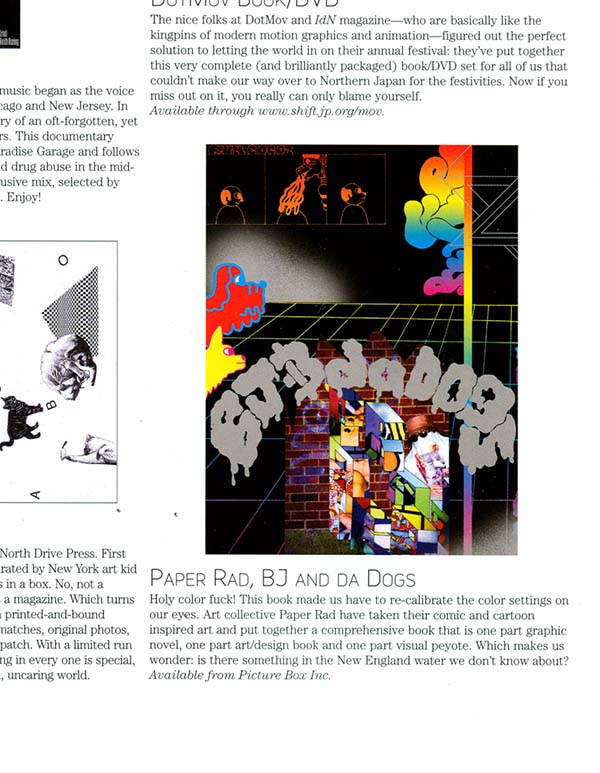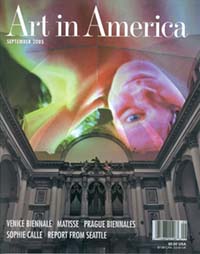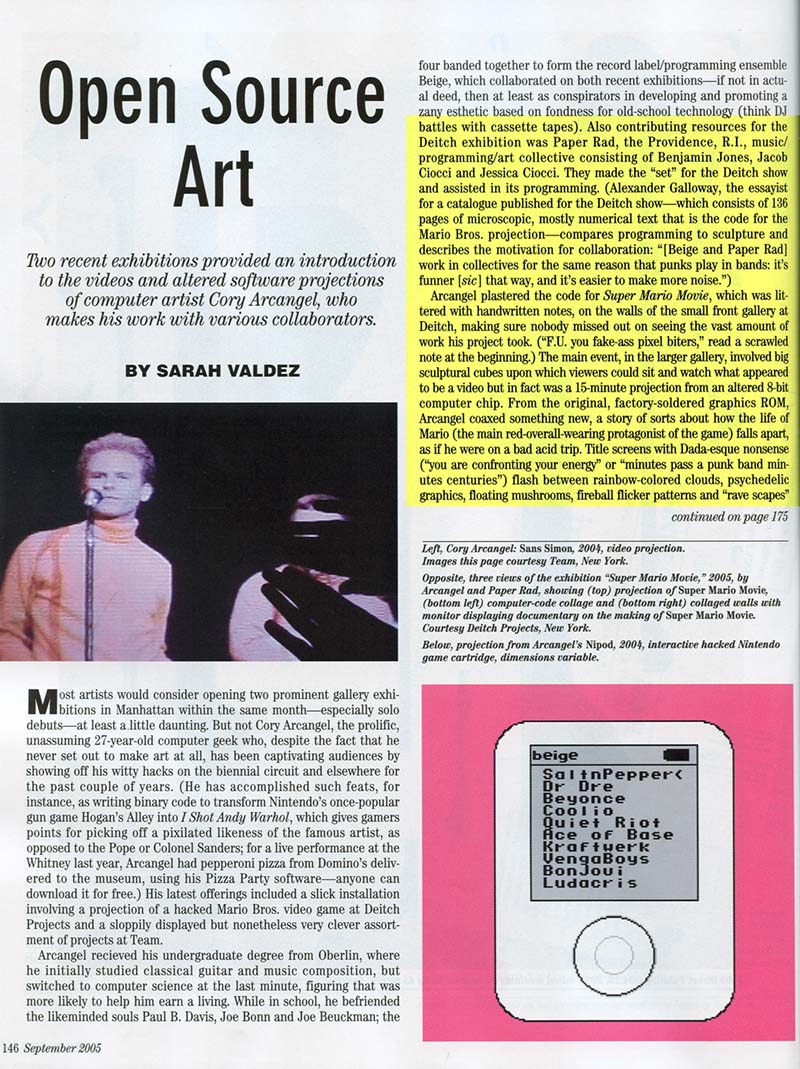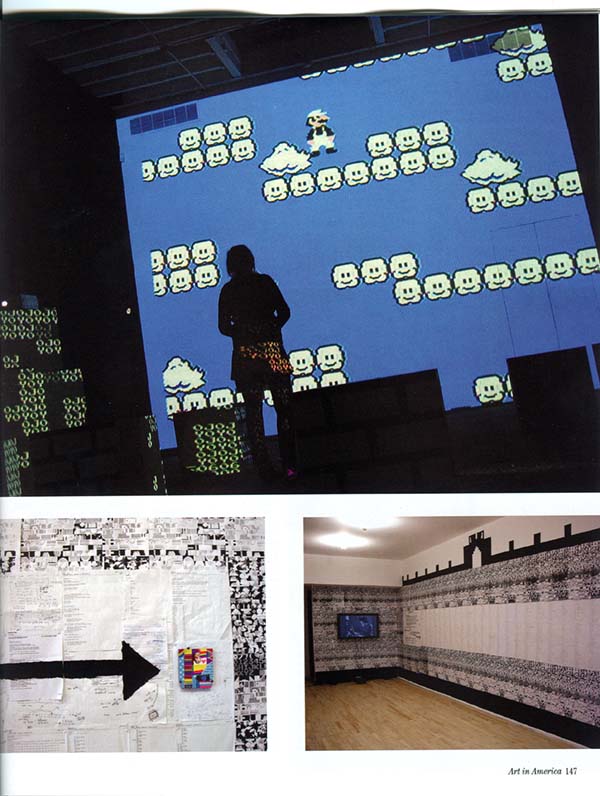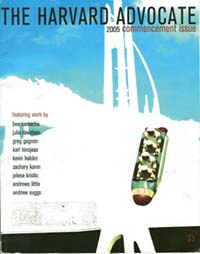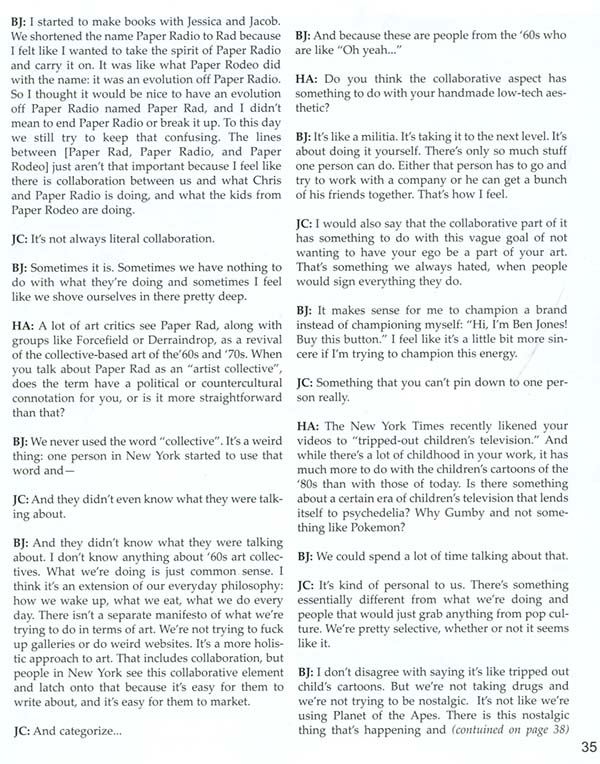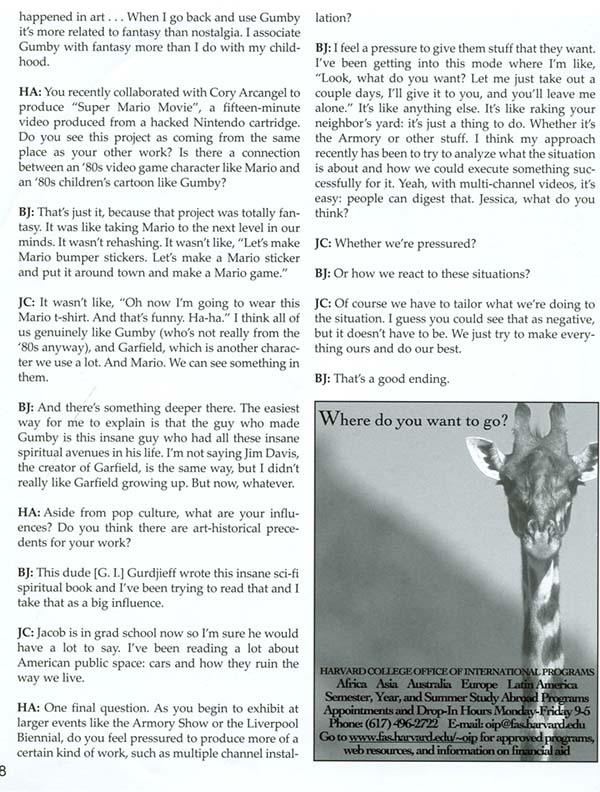Table of Contents
Browse Items
Art
Contact
Info
Links
Music
Press
Projects
|
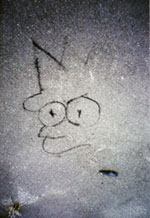
|
|
Fri, 22 Feb 2008
Fri, 28 Jul 2006
Wed, 31 May 2006
Mon, 19 Dec 2005
We are in this new book McSweeney's put out called Dear New Girl about some cool found notes interpreted by lots of different artists:
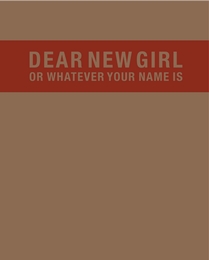
here's a paper radder page:
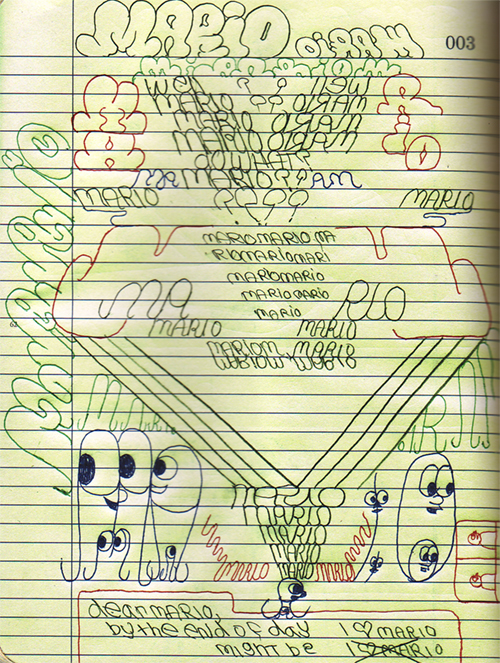
|
[/press]
permanent link
|
Mon, 12 Dec 2005
johanna from le tigre reviewed our book on rhizome.org!
http://rhizome.org/netartnews/story.rhiz?timestamp=20051205
The manic and varied output of Paper Rad--the art collective of Jessica Ciocci, her brother Jacob, and their friend Ben Jones--now includes a book, and it's more than a hard copy of the group's content-rich, arcade-like, bad html 'web mall.' The book, 'B.J. and da Dogs,' is published by art and comics press PictureBox, and is a collection of kaleidoscopic doodling, stoner poetry, two graphic novellas, found and staged photos, and installation documentation of large-scale painted cardboard dioramas. Adult insights, near-past nostalgia, and obsessive pop culture tangents mesh with teen aesthetics (i.e. punk and skate zines of the '80s & '90s, early video games, neoprint booths and drawing software) amid multiple paper stocks and, as the team boasts, 'almost every fluorescent Pantone ink.' Here fancy production is the perfect foil to Paper Rad's makeshift aesthetic and cavalier use of both obsolete and of-the-moment technologies. But remarkably, the collective’s pop treasure/ detritus sensibility, while astute, is only compassionately satirical, and hardly ironic at all. Mainly it's really funny and looks great. - Johanna Fateman
|
[/press]
permanent link
|
Tue, 08 Nov 2005
LA Weekly OCT. 28 - NOV. 3, 2005
The Kids Aren't All Right
Is over-education killing young artists?
by AARON ROSE
In the summer of 2004, I got a call from Arty Nelson, who often writes about art for this publication. He had just attended the much-lauded "Supersonic" show. For those who aren't familiar, "Supersonic" is a large exhibition, now in its second year, that features the work of MFA students from esteemed area programs like CalArts, Art Center, UCLA, etc. When I asked the writer how the show was, he simply said: "The kids aren't all right."
Having not yet seen the exhibition, I was more inclined to give the young artists the benefit of the doubt. Considering they were just finishing years of school, I wouldn't have expected to see the most developed work in the world, but I would still have hoped for something to blow my socks off. After seeing the show, though, I had the same sinking feeling. While the overall installation was impressive and the space at Art Center in Pasadena was amazing, the work left me mostly empty and with a few exceptions seemed like nothing more than a rehash of conceptual ideas that were mined years ago. I was out of town for the 2005 show at the newly renovated L.A. Design Center, but I heard similarly dismal accounts. It made me wonder why, when we live in such a socially and politically volatile time, are these students producing stuff with little or no social relevance when they should be delivering edgy, urgent, thought-provoking work?
For the last 15 years — first as a painter, then as a gallery owner and now as an independent curator, publisher and filmmaker — I have had the good fortune of dealing almost exclusively with young, aspiring artists — artists with chips on their shoulders and fire in their hearts. I have worked with university-trained and self-taught artists. For the last two years an exhibition I co-curated, "Beautiful Losers," has been on the American museum circuit. The show focuses on a loose-knit group of artists (Chris Johanson, Barry McGee, Margaret Kilgallen, Ryan McGinness, Thomas Campbell, etc.) who came up from the streets and, for the most part, entered the art world through the back door.
Many of the artists in "Losers" have gone from relative obscurity to international renown, and along the way I've witnessed all the positive and negative trappings that come with that success. I've seen the underground go overground and, in some cases, lose much of its original power and charm. Still though, I have a never-ending hunger for new art created by young artists. In fact, it is the energy of youth that has kept me in the art game so long. In my opinion, it has always been the job of the young artists to shake things up, to throw out old ideas and usher in a new way of thinking. I want to be a part of that.
So why was the "Supersonic" exhibition filled with such uninspired work? I'll take a stab at trying to answer that here. I should interject that this is not meant to be a rant against any particular artist, educational institution or exhibition. I mention "Supersonic" simply because it represents a larger trend that I have noticed around the country and the world for some time now.
It has always been the function of artists to tell the narrative of our times in a way that isn't filtered through big-media spin or the historical revisionism of academic pundits. Recent and historical precedence tell us that it should be young people, and particularly the artists among them, who are most passionately voicing this narrative. But they're not. In fact, there is a critical lack of voice among young artists, and I believe that art schools are to blame for this crisis.
There are quite possibly more quality art schools in and around Los Angeles than anywhere else in the country. These institutions are staffed with amazing talents (Mike Kelley and John Baldessari among them). Legions of creative young people flock to our city every year to work alongside their heroes and develop their talents with hopes of making it as an artist. That's great; an education, particularly in art history and technique, can be valuable to a young artist, and studying with your heroes can be inspiring. What happens too often in these situations, though, is that we find young artists simply emulating their instructors, rather than finding and honing their own aesthetics and points of view about the world, society, themselves.
In the beginnings of an artist's career, the power in his or her work should lie not in their technique or knowledge of art history or theory or business acumen, but in what one has to say. Artists might as well hang up their paintbrushes before they even begin if that voice isn't in place. Ideas and a point of view are the backbones of the artistic process. In fact, L.A. art school gurus such as Kelley and Baldessari were wild cards when they began. Their works were constantly infused with socioeconomic and political agendas that went against the art world's status quo. In can be argued that it was the rebellious attitudes and iconoclastic positions of those artists' first works that built their current international success. But now they are part of an art establishment that seems distant to many young people who should be getting inspired by art.
While some may argue to the contrary, contemporary art is not a luxury. I believe it is a necessity. It satisfies not only a visual need, but also an educational and, most importantly, a spiritual need for us. Art should teach us about how we relate to the world. It seems ironic, then, that the curriculum taught in most MFA programs addresses almost everything but fulfilling these needs. Art institutions today work more like business schools than any kind of creative laboratory. As is often the case with such professional schools, the credential has come to mean more than any individual biography or personal point of view. From the creative side, art theory has begun to play such a dominant role in art school that I feel it has lobotomized many young creative minds. Young MFAs are required to read endless texts, many written more than 20 years ago by stuffy Frenchmen with navel-gazing theories holding little or no relevance to life in Bush's America. They are then asked to somehow relate their work to these deconstructionist theories and then be judged by how successfully they do this.
The primary problem with this kind of education is that by diving deeper and deeper into the theoretical and self-referential, artists lose touch with their public. As a result, the public, particularly the young public, often feels alienated from art. Intentionally or not, people have been made to feel inferior to the art intelligentsia. What inevitably follows is that art becomes simply something to be bought, sold and understood by a very small sector of the population and it loses its urgent role as a means of communication or as a catalyst for social or cultural change.
On more than one occasion I have felt the urge to spray-paint "Mike Kelley is the Enemy" on walls around the city. Nothing against Kelley; his early work in particular was a big inspiration and holds great meaning for me. Rather, I want to do this as a statement to young artists that they need to kill their heroes to discover themselves.
Of course, I'm generalizing. There are many young, emerging artists working today who truly believe in the relevance of what they are doing and have the chops and points of view to back it up. And this isn't to suggest that all artwork should be political. I believe that a personal statement that is drawn from the heart can be more powerful and effective than propaganda. Works that have inspired me recently include those by Ashley Macomber, a Los Angeles artist who creates intricately painted human/animal hybrids that could be said to resemble those campy American Indian paintings found on truck-stop T-shirts. Upon deeper consultation, however, they provide a strong commentary on our relationships to each other, nature and ourselves. Also of note is the East Coast collective Paperrad, whose multimedia installations include everything from sculpture to animation to printed fanzines. The collective's innocent yet sophisticated approach to art consistently leaves me feeling hungry for more. Other artists of interest include Masaki Kawai, Matt Leines, Tauba Auerbach, Jim Drain and Jo Jackson. Needless to say there is much good work out there.
Some of these artists are MFAs and some are not. The point of all this is that if young artists had the courage and the encouragement to focus more on their art than the "art business," there would be even more inspiring work to see and less distance between art and the public. Maybe all it takes is a little less thinking and a lot more feeling. If we could open our hearts amazing things could happen.
Below are some links you may find inspiring:
www.oogaboogastore.com
www.deathbombarc.com
www.ashleymacomber.com
www.tracyandtheplastics.com
www.paperrad.org
www.hamburgereyes.com
www.epiclylaterd.com
www.codyb.com/native.htm
www.kyledraws.com
www.littlecakes.org
www.welikehim.com
www.learningtoloveyoumore.com
www.textfield.org
www.megawordsmagazine.com
|
[/press]
permanent link
|
Fri, 16 Sep 2005
Tue, 13 Sep 2005
Thu, 08 Sep 2005
|
|


